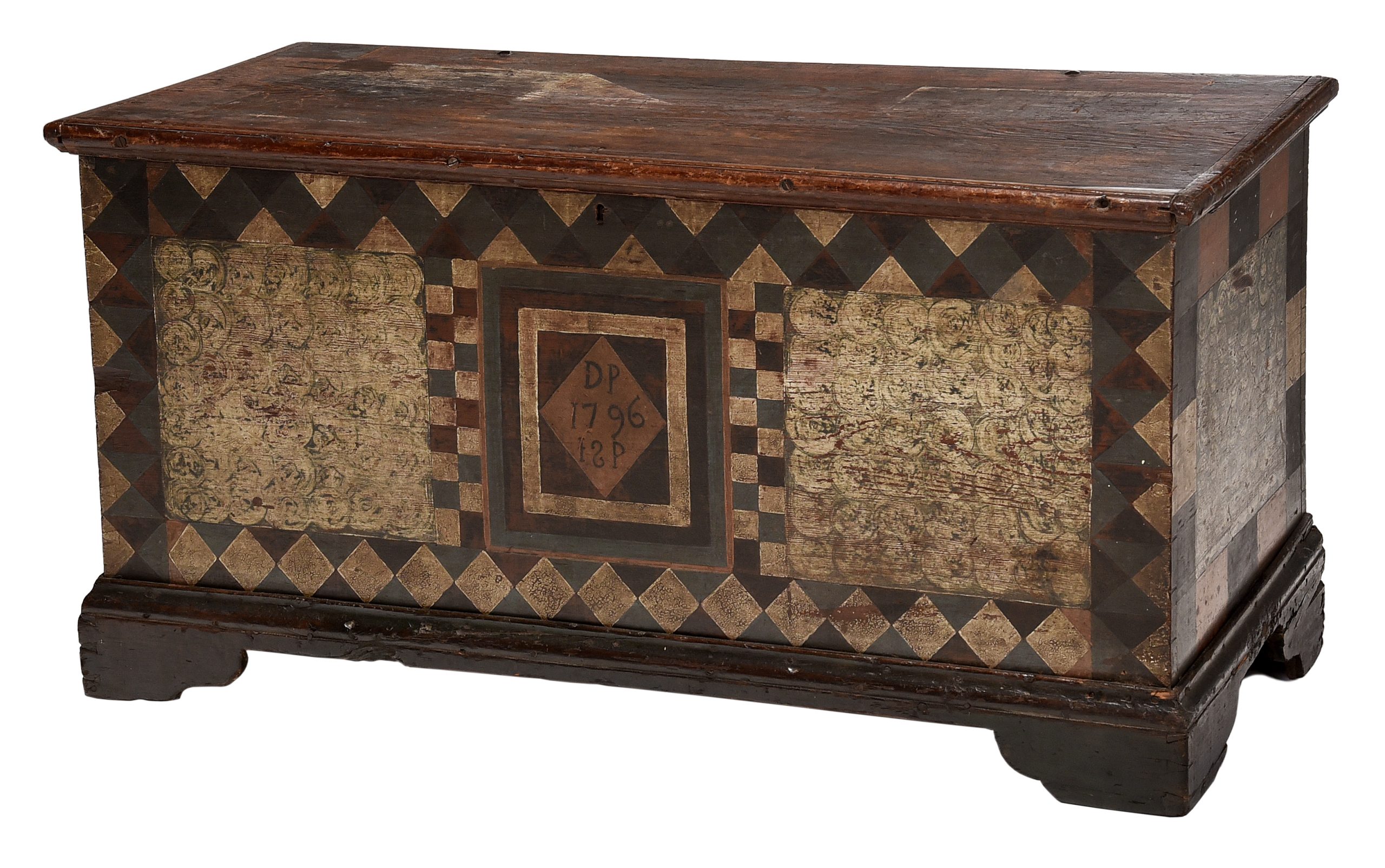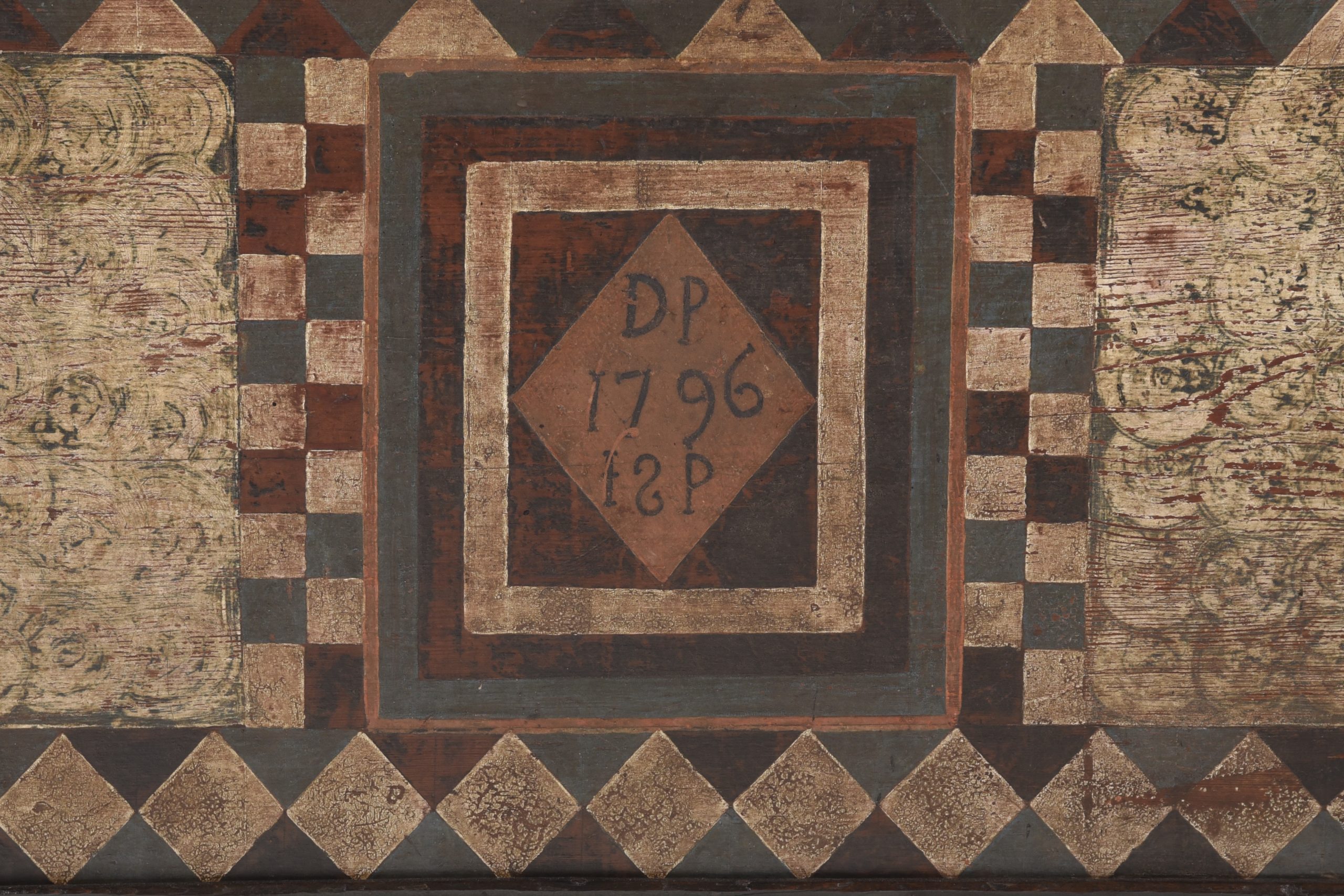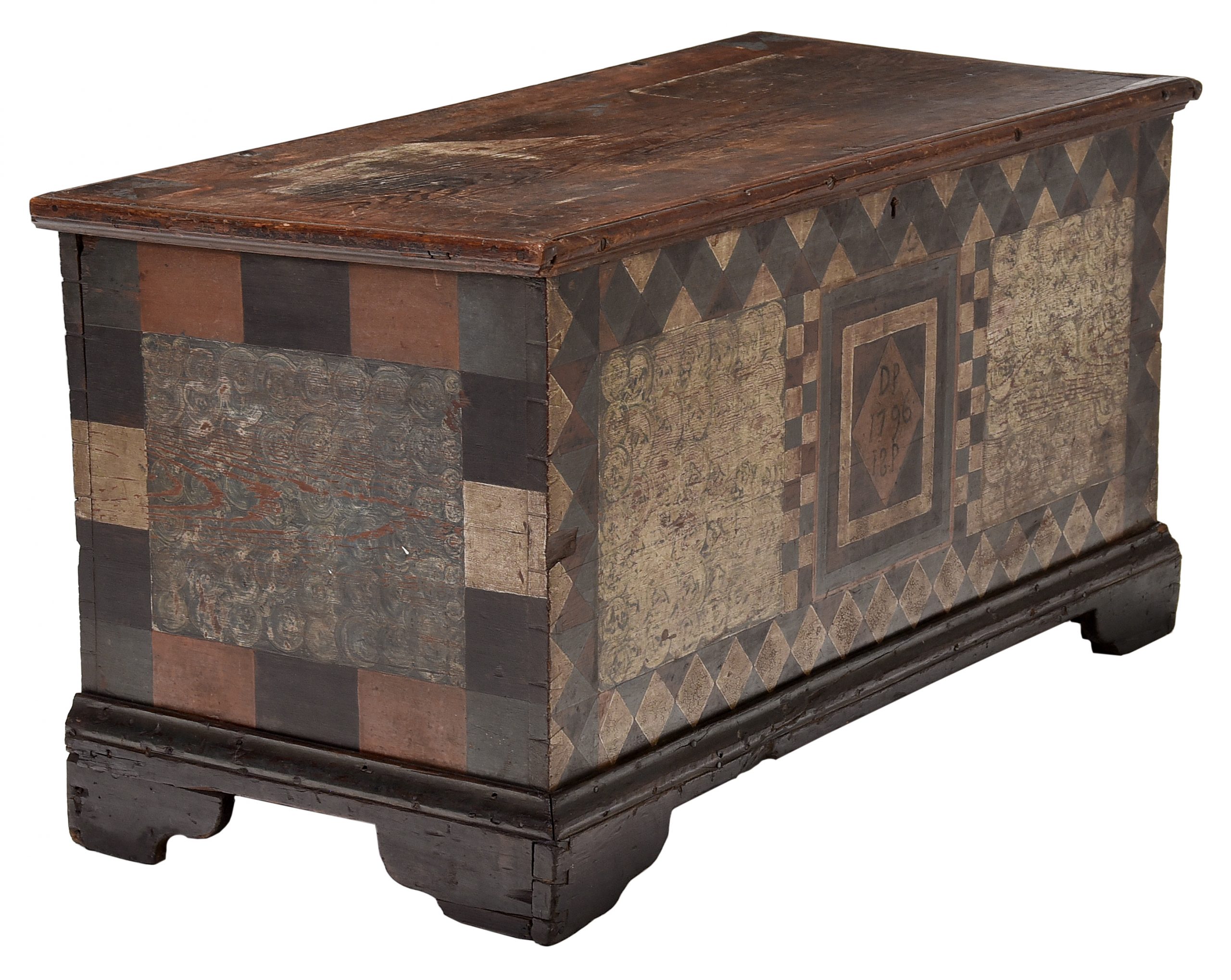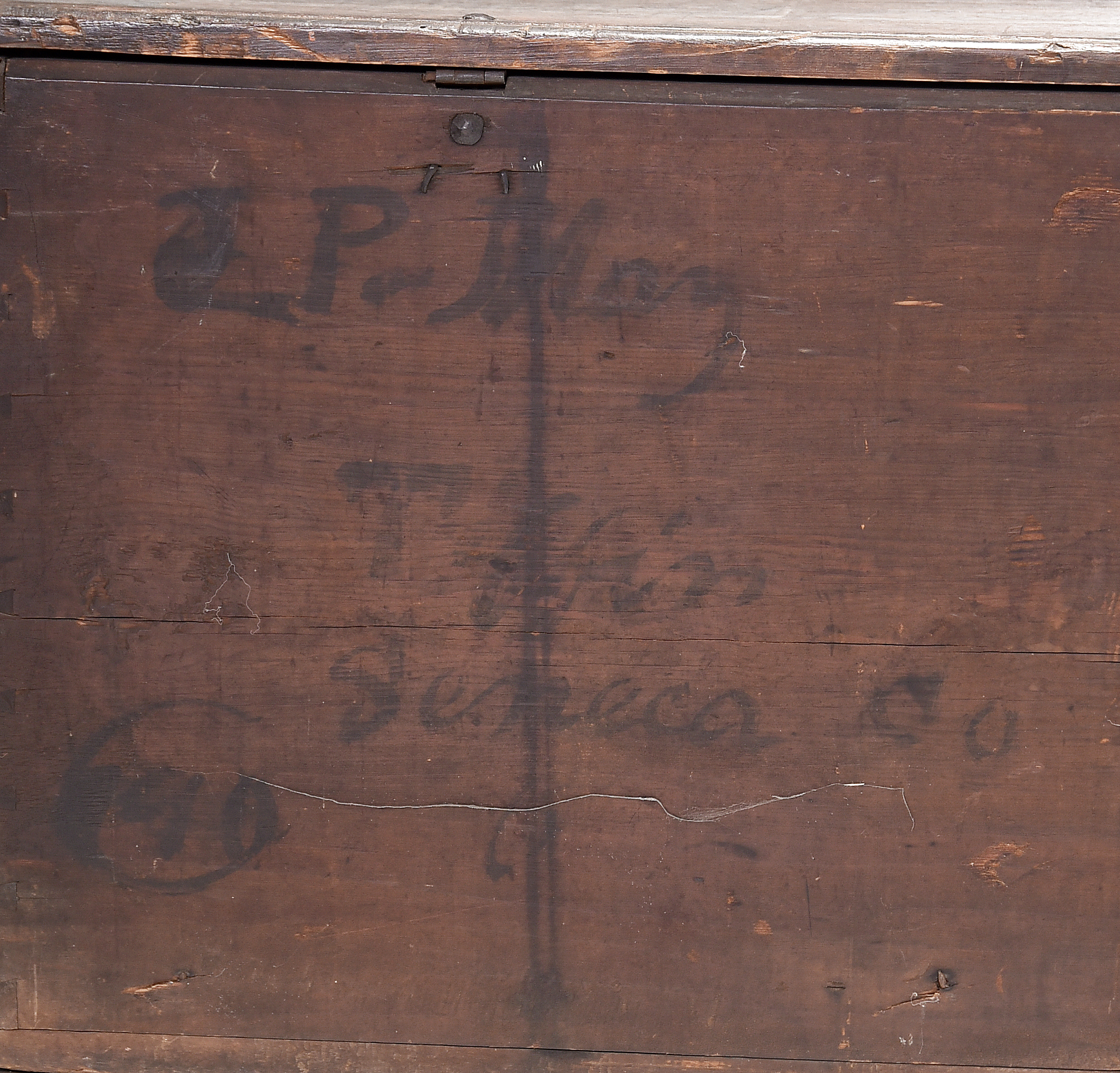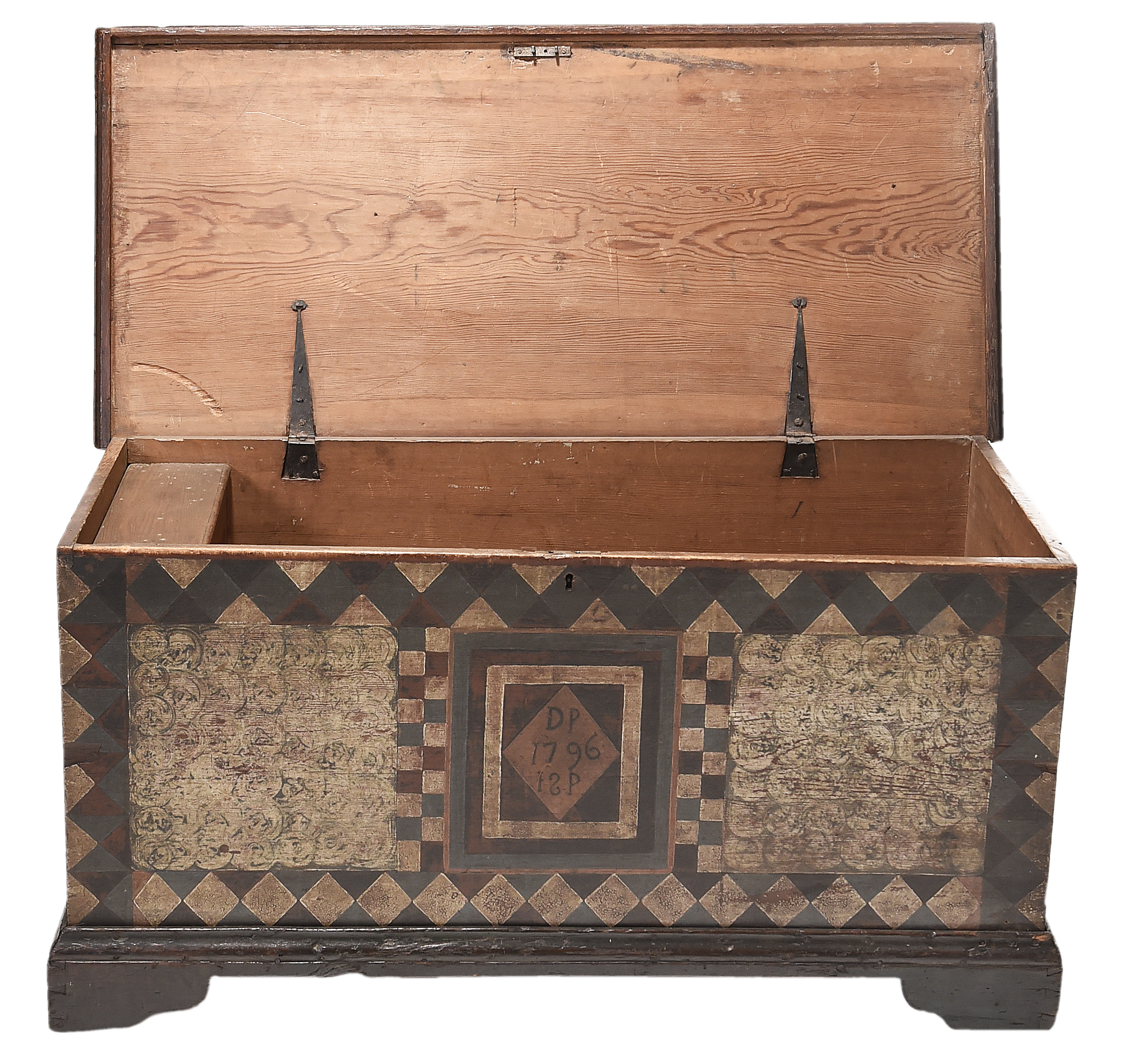Very Rare Virginia Paint Decorated Lift Top Chest by Johannes Spitler
This exceptional Virginia painted chest is the earliest dated example from the 35 identified surviving works by Johannes Spitler. Thanks to the research of Betsy Davison, Spitler is among the most well documented furniture decorator of this early period, and certainly the most recognizable. Other examples of his work are held by major museums including Colonial Williamsburg, the Winterthur Museum, the American Folk Art Museum, the Museum of the Shenandoah Valley, and a number of noted private collections.
Johannes (or John) Spitler, like most of the Rhenish farming inhabitants of Massanutten, Virginia, was a farmer. And like most other farmers, Spitler took on other work during the offseason, but the labor he chose has meant his name has endured the ages. Other farmers would bring him furniture and, after negotiating a barter or payment, Spitler would paint them, decorating them in a style that was simultaneously all his own and rooted in traditional, cultural motifs. The nature of this kind of work, a supplementary source of income be it monetary or material when he couldn’t farm, meant he could only work decorating furniture for about four months of the year. It’s estimated that he could have completed two pieces every week, though most of these pieces do not survive. There’s no evidence that Spitler ever painted pieces to be shipped and sold elsewhere, making his part-time industry one totally localized to this isolated enclave of Rhenish (German-speaking Swiss), predominantly Mennonite farmers. This isolation and cohesiveness meant a distinct aesthetic style developed over time. Even as times changed, bringing a new wave of settlers from the largely English-descended Tidewater Region, Spitler maintained a distinctive, personal style while catering to the new neoclassical tastes these new people brought with them to Massanutten and the Page Valley. Eventually, Spitler would leave his home in Virginia and move with his extended family to Fairfield County, Ohio in 1806, and would live there for the rest of his life. It is not known if he continued to paint furniture there.
The chest we are proud to present here hails from 1796, during which Spitler was in his first stylistic period, defined by distinct vertical and horizontal axes and geometric decoration, rather than floral, foliate, or animalistic that characterize his later style. He used it predominantly for his Mennonite clients, of which David Pence, the man it was most likely painted for, was one. The two men’s families were neighbors, and it was customary for young men like David to receive chests such as these to store their personal items in. David married Barbara Ruffner seven years after the chest was painted, and took it with them when they, like many of their family and neighbors, migrated to Fairfield County, Ohio in 1807. Barbara would later die and David would marry a woman named Catharine Grove who, upon her husband’s death in 1852, would inherit the Spitler chest. It would then pass to their daughter Sarah, who would marry a man named John Mays in 1858. After Sarah’s death, the family moved at some point to Tiffin, in Seneca County, and the chest documents this move with a painted label on the back, presumably for shipping purposes.
Ownership of the chest after that is not known, but it did not descend in the family. It was found in the Tipton area in the 1970s and sold, from there passing through the hands of several highly regarded dealers, including Deanne Levison who placed it with the current owner in 1981. Of important note, Spitler authority Betsy Davison’s scholarship has been an indispensable help in cataloging this important chest.
For more on Spitler and his furniture, her lecture at MESDA is available via this link: https://www.youtube.com/watch?v=yOoudktMekI&list=PLRGH9r5zILN_NDepX2QWwHiOrqCn82Zzw&index=72
World-Class Consignments and Exceptional Results
